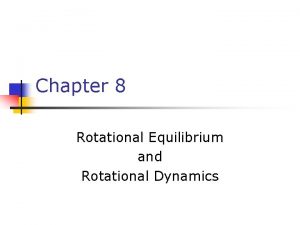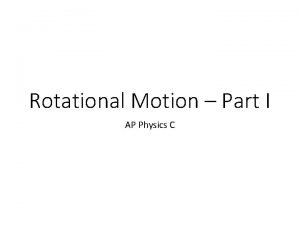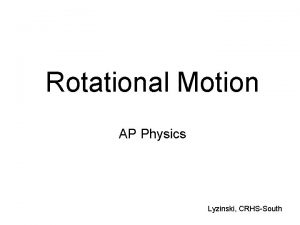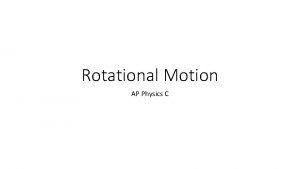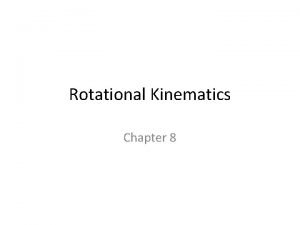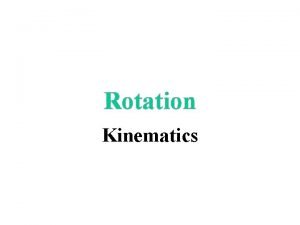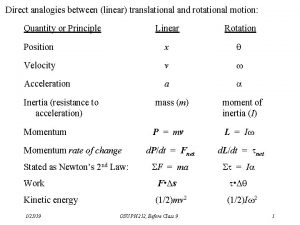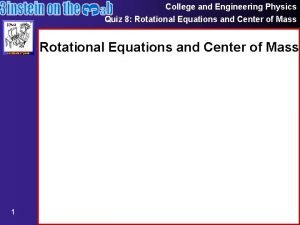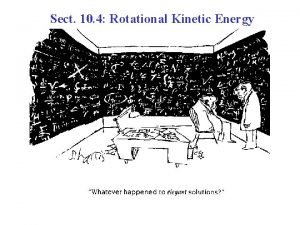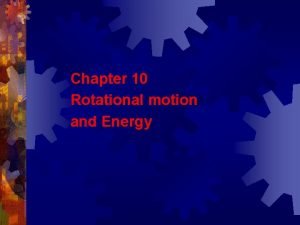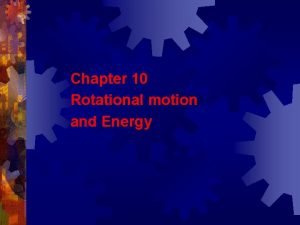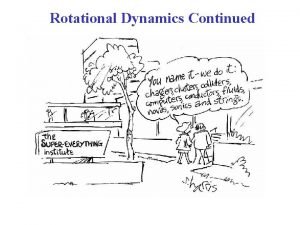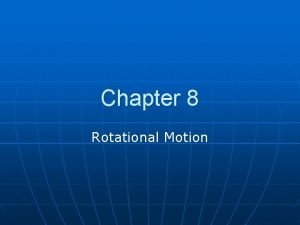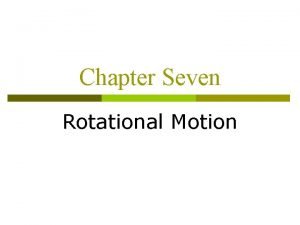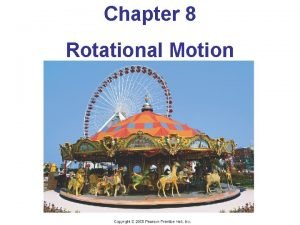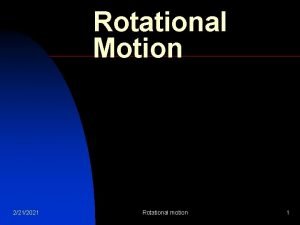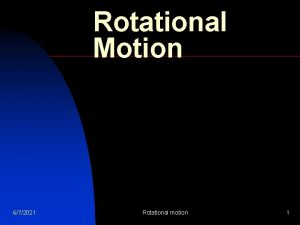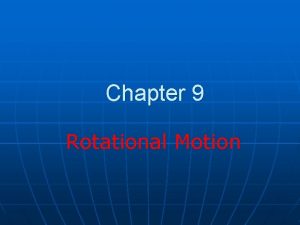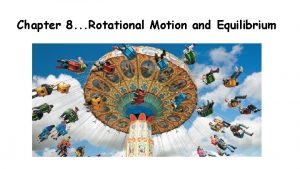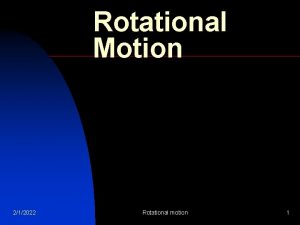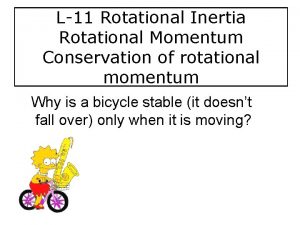Section 10 8 Energy in Rotational Motion TranslationRotation














- Slides: 14

Section 10. 8: Energy in Rotational Motion

Translation-Rotation Analogues & Connections Translation Rotation Displacement x θ Velocity v ω Acceleration a α Force (Torque) F τ Mass (moment of inertia) m I Newton’s 2 nd Law ∑F = ma ∑τ = Iα Kinetic Energy (KE) (½)mv 2 (½)Iω2 CONNECTIONS: v = rω, atan= rα a. R = (v 2/r) = ω2 r , τ = r F , I = ∑(mr 2)

• Work done by force F on an object as it rotates through an infinitesimal distance ds = rdθ d. W = F ds = (Fsinφ)rdθ d. W = τdθ • The radial component of F does no work because it is perpendicular to the displacement.

Power • The rate at which work is being done in a time interval Δt is • This is analogous to P = Fv for translations.

Work-Kinetic Energy Theorem • The work-kinetic energy theorem in rotational language states that the net work done by external forces in rotating a symmetrical rigid object about a fixed axis equals the change in the object’s rotational kinetic energy

Ex. 10. 11: Rod Again

Sect. 10. 9 Rolling Objects • The curve shows the path moved by a point on the rim of the object. This path is called a cycloid • The line shows the path of the center of mass of the object • In pure rolling motion, an object rolls without slipping • In such a case, there is a simple relationship between its rotational and translational motions

Rolling Object The velocity of the center of mass is The acceleration of the center of mass is

• A point on the rim, P, rotates to various positions such as Q and P. At any instant, a point P on the rim is at rest relative to the surface since no slipping occurs • Rolling motion is thus a combination of pure translational motion and pure rotational motion

Total Kinetic Energy • The total kinetic energy of a rolling object is the sum of the translational energy of its center of mass and the rotational kinetic energy about its center of mass K = (½)Mv 2 + (½)Iω2 • Accelerated rolling motion is possible only if friction is present between the sphere and the incline

Example: Sphere rolls down incline (no slipping or sliding). v = 0 KE+PE conservation: ω = 0 (½)Mv 2 + (½)Iω2 +Mg. H = constant, or (KE)1 +(PE)1 = (KE)2 + (PE)2 where KE has 2 parts: (KE)trans = (½)Mv 2 (KE)rot = (½)Iω2 v=? y=0

Summary of Useful Relations

Translation-Rotation Analogues & Connections Translation Rotation Displacement x θ Velocity v ω Acceleration a α Force (Torque) F τ Mass (moment of inertia) m I Newton’s 2 nd Law ∑F = ma ∑τ = Iα Kinetic Energy (KE) (½)mv 2 (½)Iω2 CONNECTIONS: v = rω, atan= rα a. R = (v 2/r) = ω2 r , τ = r F , I = ∑(mr 2)

Ex. 10. 12: Energy & Atwood Machine
 Rotational equilibrium and rotational dynamics
Rotational equilibrium and rotational dynamics Rotational equilibrium and rotational dynamics
Rotational equilibrium and rotational dynamics Chapter 2 section 1 describing motion answer key
Chapter 2 section 1 describing motion answer key The main difference between speed and velocity involves
The main difference between speed and velocity involves Motion section 1 describing motion
Motion section 1 describing motion Describing motion chapter 1 lesson 1
Describing motion chapter 1 lesson 1 Motion section 1 describing motion
Motion section 1 describing motion Ap physics rotational motion
Ap physics rotational motion Torque and moment of inertia
Torque and moment of inertia Ap physics c rotational motion
Ap physics c rotational motion Rotational motion and the law of gravity
Rotational motion and the law of gravity 4 linear motion equations
4 linear motion equations Angular quantities
Angular quantities Analogy between linear and rotational motion
Analogy between linear and rotational motion Torque and rotational motion quiz
Torque and rotational motion quiz
